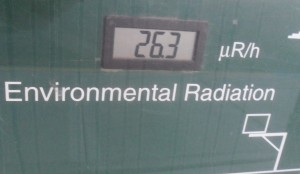“The accident was not a natural disaster but was obviously a man made disaster.”-Fukushima Nuclear Accident Independent Investigation Commission
On 05 July 2012, the results of a months long Diet (Japanese parliament) investigation into the ongoing nuclear disaster at the General Electric designed Fukushima Daiichi nuclear power factory, places blame squarely on Tokyo Electric Power Company (TEPCo), and the government.
The report also stated that failings in management began years before the March 2011 disaster.
The report criticizes government response to the nuclear disaster. The former prime minister who was in charge last year, Kan Naoto, gave a typical Japanese political response, agreeing with parts of the report and refuting other parts.
The report said that construction of Fukushima Daiichi was not up to earthquake standards, as claimed by TEPCo. The report says the nuclear disaster might have actually started with the earthquake, not the tsunami.
Government and corporate leadership only made things worse: Self serving attitudes of leaders resulted in willful negligence, both in the construction of the nuke plant, and the disaster response.
There were plenty of opportunities for TEPCo to upgrade Fukushima Daiichi with stronger construction and better safeguards.
In the first hours of the disaster the government interfered at different levels, causing confusion within corporate chains of command.
The government also confused the general public, by giving reports that conflicted with media reports. In some cases government reports outright contrasted with events watched live on Japanese TV (I remember watching live on the internet as the tsunami swept over three story buildings, then heard a government official saying the waves were only 3 meters tall!!!)!
The government issued confusing evacuation advise, in some cases people actually evacuated into areas being contaminated with radiation. The report suggests that government leaders were trying to avoid taking full responsibility for the disaster by making evacuations voluntary, and using terms like “just in case”.
Another issue was the announcement of radiation danger zones long after the nuclear disaster began. The report says the government had radiation data for a whole month before hand, and could have declared the danger zones much sooner.
The Fukushima Nuclear Accident Independent Investigation Commission (NAIIC) began in December 2011, interviewing 1,167 people, including former government and TEPCo officials. The NAIIC is planning “…to make an English version of the final report to show it to the world.”-Kurokawa Kiyoshi, lead investigator
Japanese version of report here.
